St Andrews By-the-Sea: A Walking Tour
St Andrews By-the-Sea has one of those names that just naturally attracts your attention like Niagara-on-the-Lake or St. Louis-du-Ha!Ha!. It evokes an idyllic location beside the sea (not ocean -no place is ever by-the-ocean) and in the case of St Andrews it is an accurate description. It is one of the most popular tourist towns in Canada and has been drawing travellers from around the world for well over a century. Fortunately, St Andrews has resisted the temptation to become a parody of itself like many other places along the eastern seaboard. Old Orchard Beach, Maine, which also has an attractive name, readily comes to mind. Join Alison and me as we take an early morning stroll around St Andrews By-the-Sea and find out why it is still one of the top places to vacation in Atlantic Canada.
And yes I do know that there should be a period in St. Andrews, but search engines don’t like punctuation in keywords, so bear with me in humouring the tyranny of Google et al.
History of St Andrews By-the-Sea
St Andrews was founded by United Empire Loyalists from Castine, Maine in 1783. Like Shelburne, Nova Scotia founded in the same year by Loyalists, it has an ideal south facing location on the side of a gently sloping hill. A rectangular grid pattern was laid out by British surveyors making it a classic colonial settlement. Almost all the streets were named for royal titles or royal individuals like the thirteen children of George III. The founders may have been Loyalists, but their New England roots are showing in St Andrews which has a look that has far more in common with towns from Maine to Connecticut than other Maritime communities.
Initially St Andrews was a commercial town, trading the lumber and fish found on New Brunswick land and sea for Caribbean products like rum and molasses. This mural on the side of a building on Water Street pictures St Andrews at the height of its sailing ship era prosperity.
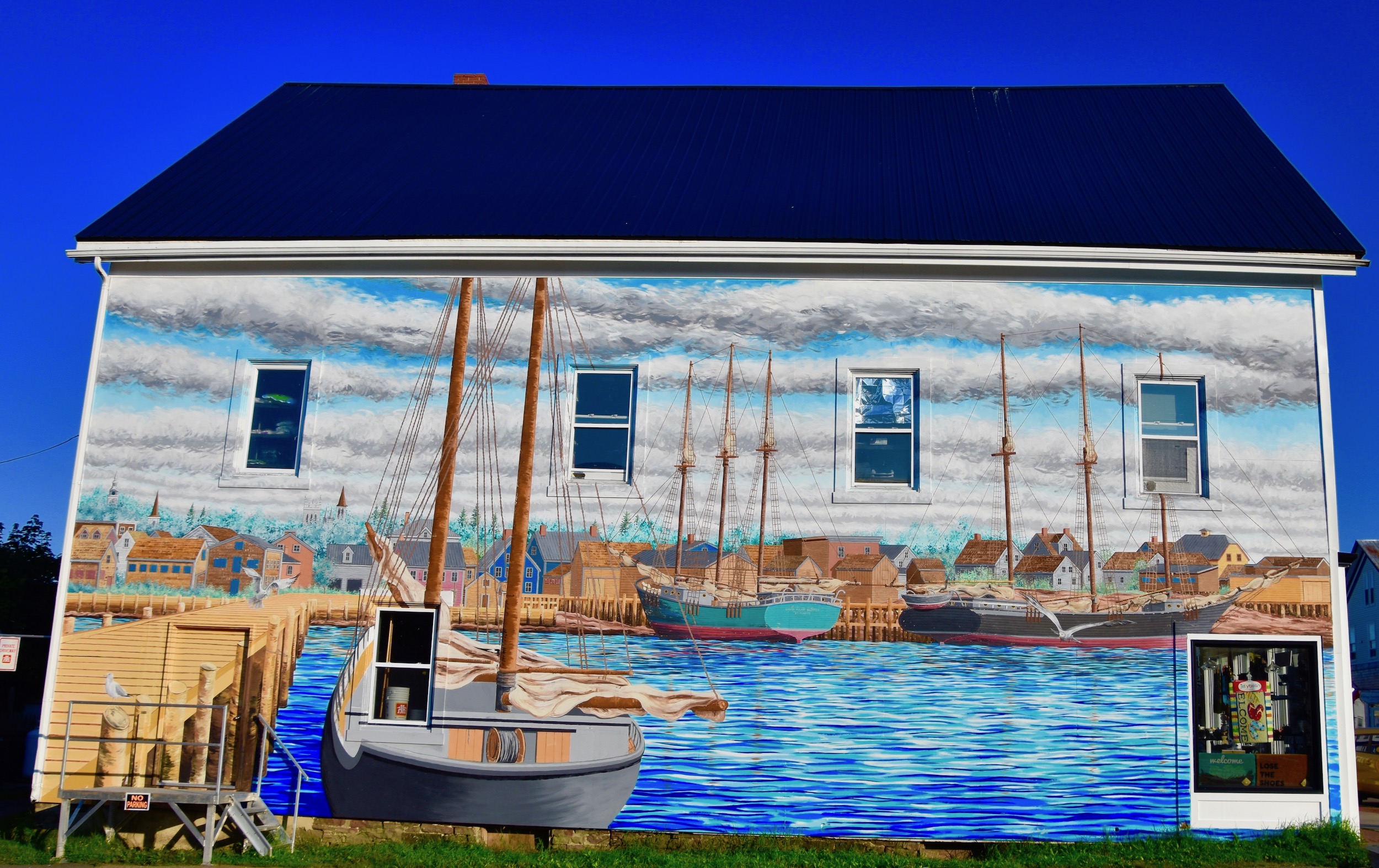
However, when the Age of Sail passed, St. Andrews languished like many other Maritime communities that had also relied on ship building and trade. The languor ended abruptly in the early 1880’s when the railway reached St. Andrews and it was chosen by the predecessor to the Canadian Pacific Railway as the site to erect a gigantic resort hotel complete with a golf course. It was then that the appendage By-the-Sea was added. Ever since the resort opened, tourism has been St. Andrews’ primary source of revenue. One of the key attractions is the architectural integrity of the town which has the largest collection of heritage buildings in Canada – 118. In 1998 St. Andrews was designated as a National Historic District. All of our walk today will be within the confines of the historic district.
The Algonquin Resort
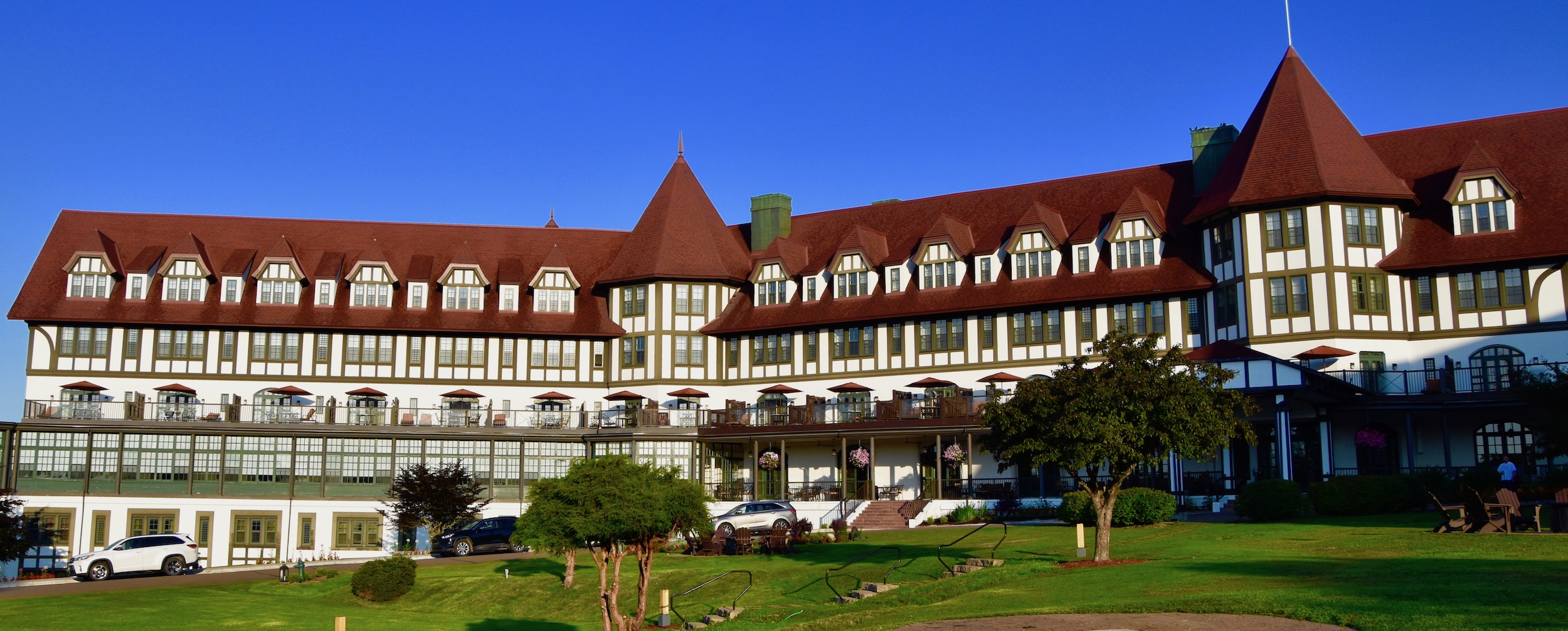
The starting point for our walk is the historic Algonquin Hotel which is the centrepiece of the Algonquin Resort, a Marriott Autograph Property which was completed renovated a few years ago. It is one of the last of the grand railway hotels in Canada and the only one in Atlantic Canada other than Digby Pines. At least once in your life you need to spend some time here to experience what it was like to vacation at the height of the Victorian tourism era. Sure it takes some imagination, but just looking at this grand facade will help conjure up an image of driving up to the entrance in an open horse drawn carriage rather than a modern SUV like we did.
The Algonquin has many attractions for families, but for us it the golf course that is the main reason to visit. It is rated in the top 25 resort courses in Canada. Here is a hole-by-hole description that will definitely whet your appetite to play this wonderful course. However, today we are going to concentrate on the town of St. Andrews and its National Historic District.

Above is a map of St. Andrews with the Algonquin Hotel in the upper left corner. We proceed down Prince of Wales Street with the Algonquin Arch that straddles the street at our backs.
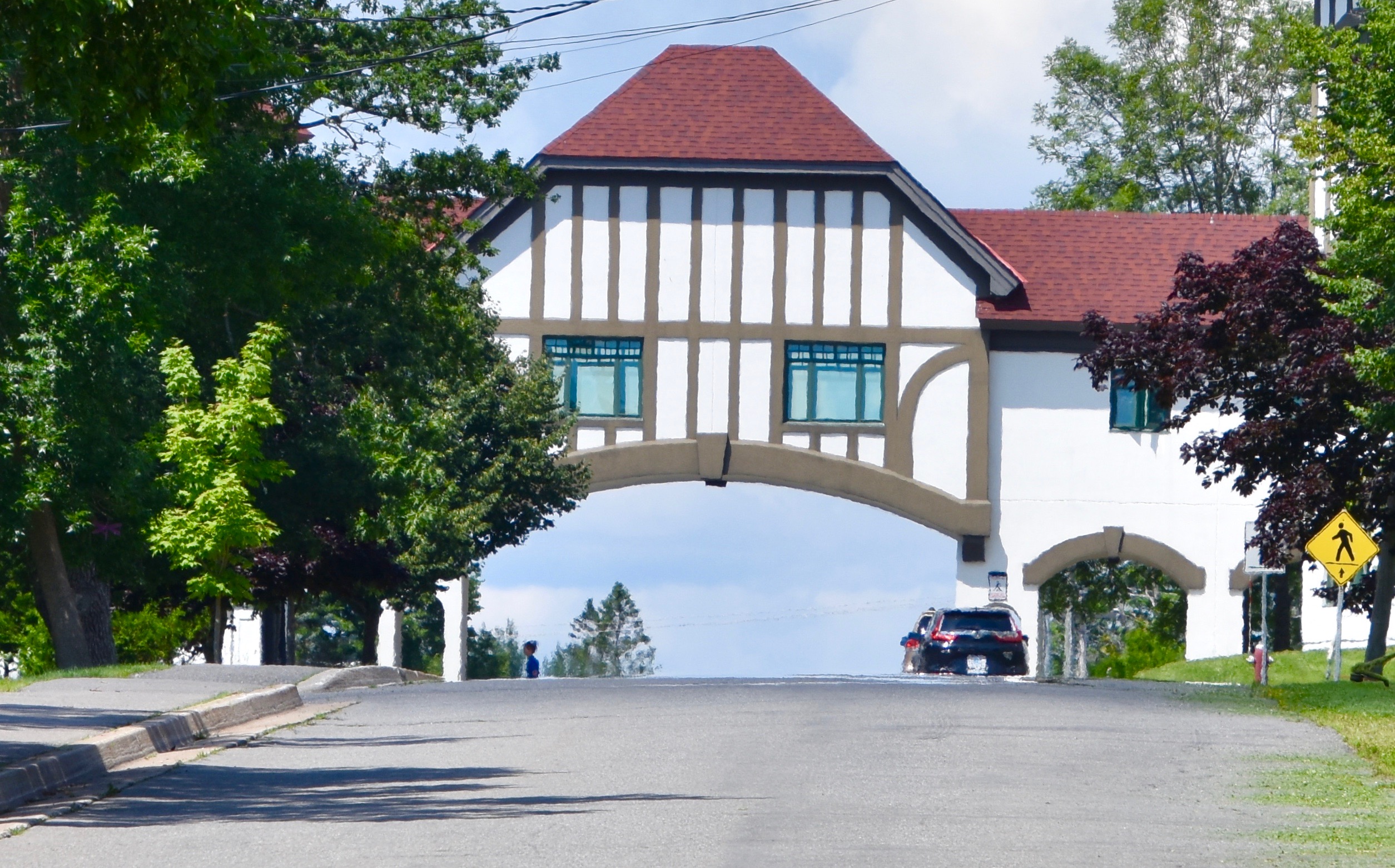
Across the street from the hotel is the large outdoor pool with this very interesting pavilion beside it. Its lines are very reminiscent of the Frank Lloyd Wright Japanese style.
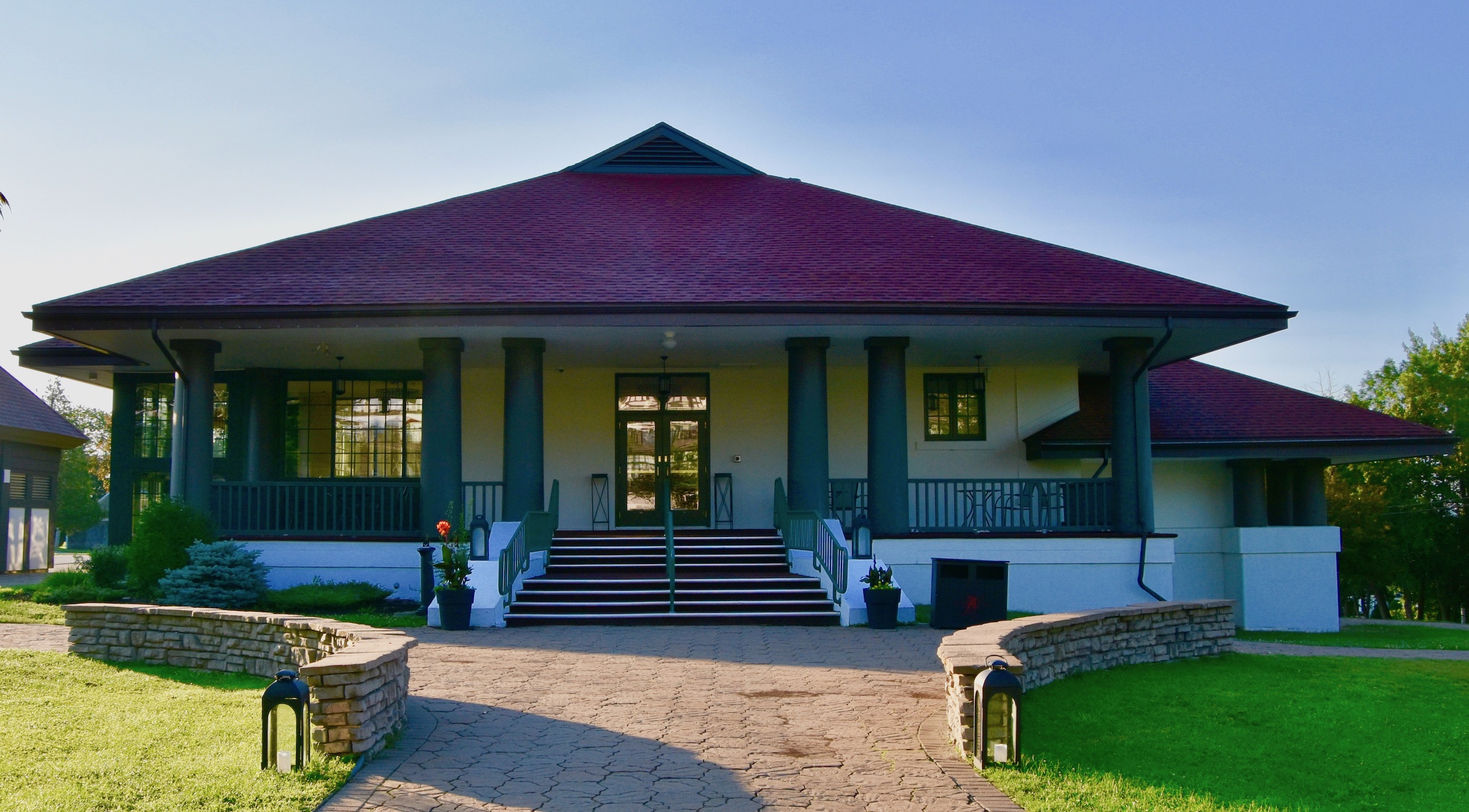
Immediately to the left is one of the most imposing buildings in St. Andrews, the Kingsbrae International Residence for Art or just KIRA as everybody calls it. Each year fifteen artists are given a one month residency in this magnificent building underscoring St. Andrews’ reputation as a haven for artists of all mediums.
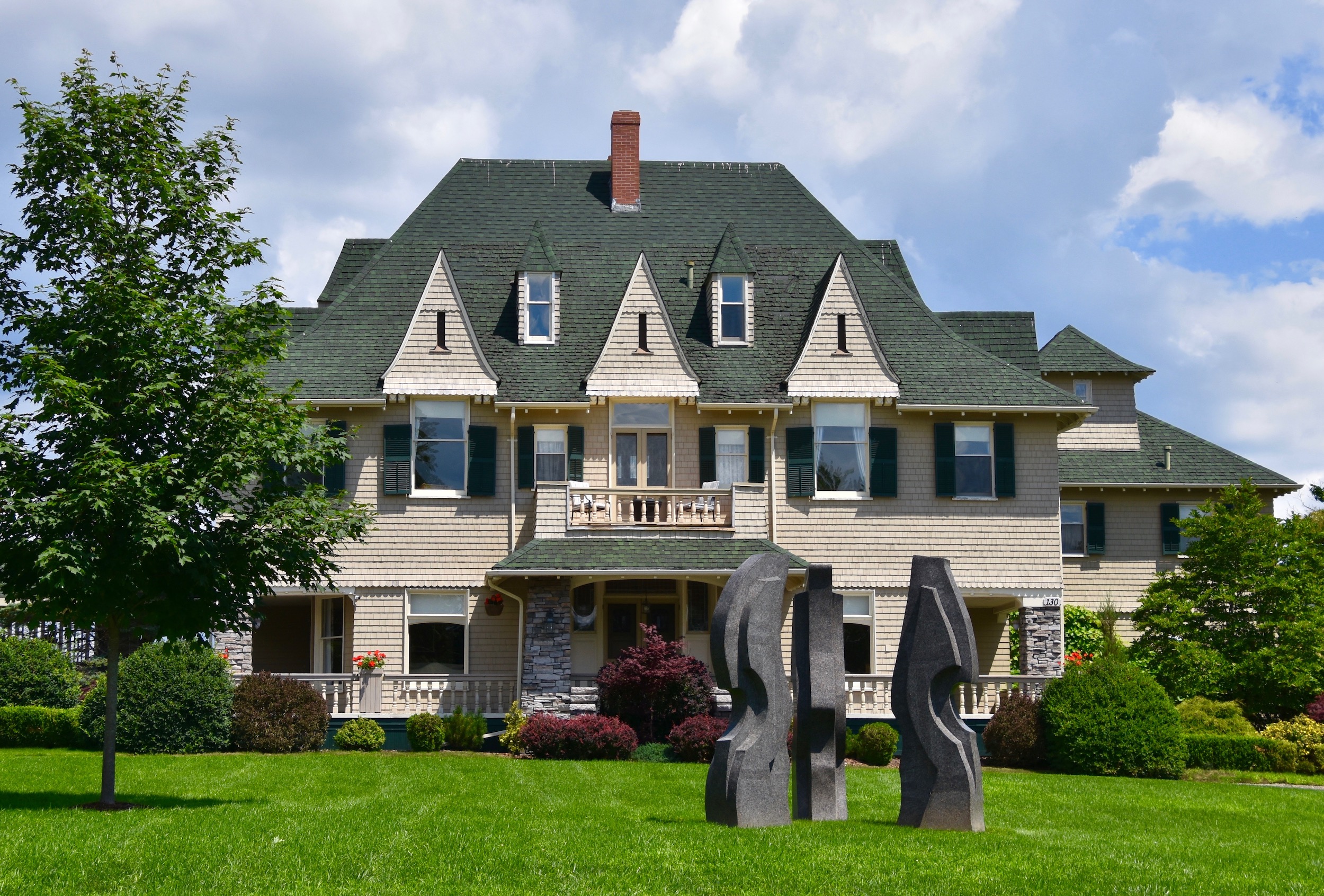
If you continue on Prince of Walls Street you will come to another of St Andrews top attractions, Kingsbrae Gardens, but we will save that for another post.
Crossing the street we spot this little bluebird on a tree at the edge of a wooded estate. Many St. Andrews residents like to decorate their properties with little whimsies and this is the first of many we saw on our walk.

Turning towards the waterfront on Adolphus Street (one of George III children), you will spot this private residence that I thought would splendidly fit the role of ‘summer cottage’ which many of these grand homes actually are. The out-of-province license plates on the Land Rover and Jaguar confirm this.
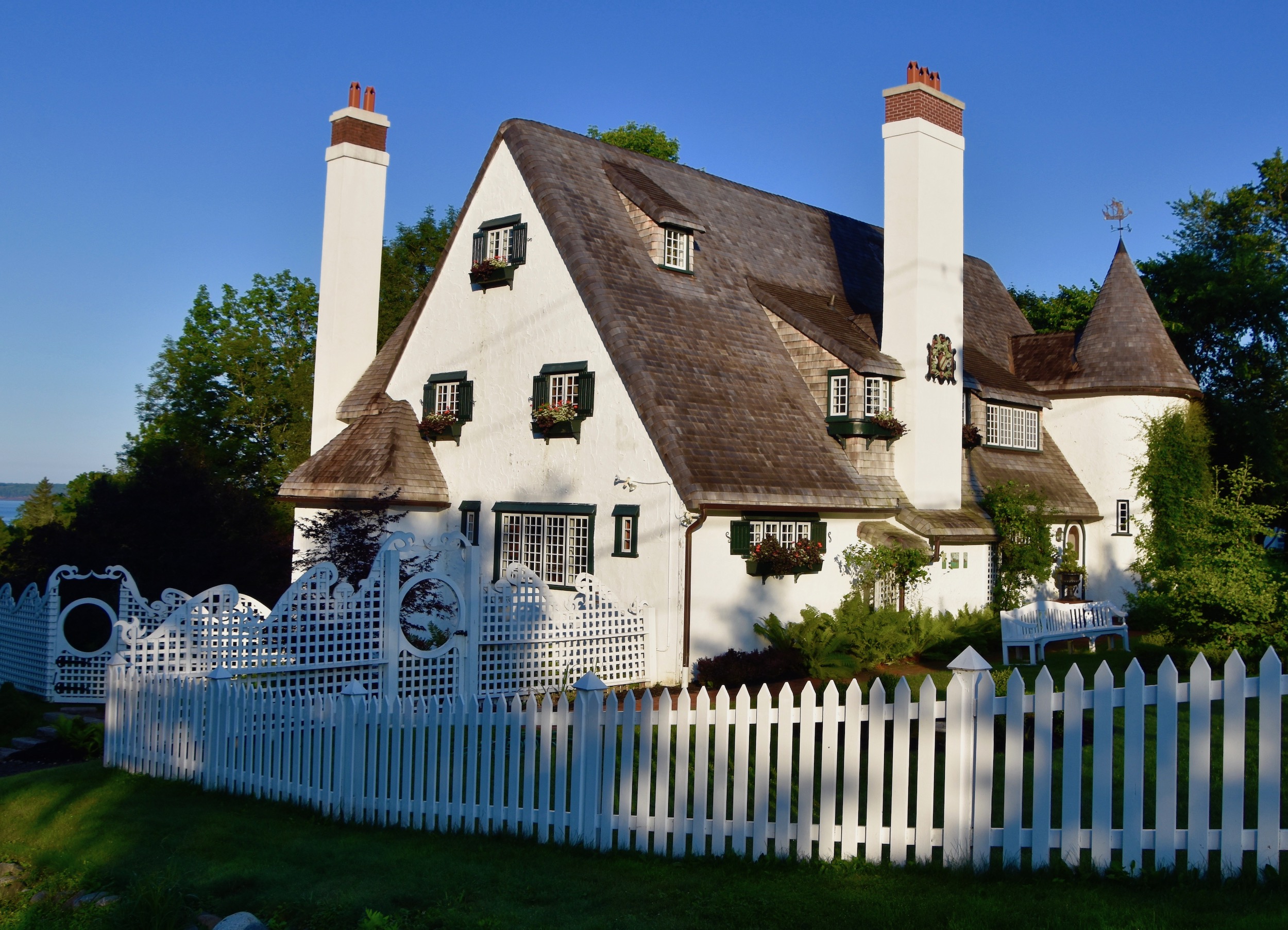
We arrive at Water Street which runs along the waterfront from the St. Andrews Blockhouse to the lighthouse. It is one of the nicest streets to stroll that you will anywhere in the country, especially if you get up early to capture the morning light and avoid the deluge of tourists that will follow in a few hours.
This is the entrance to tiny Elizabeth Park which is only one lot wide.
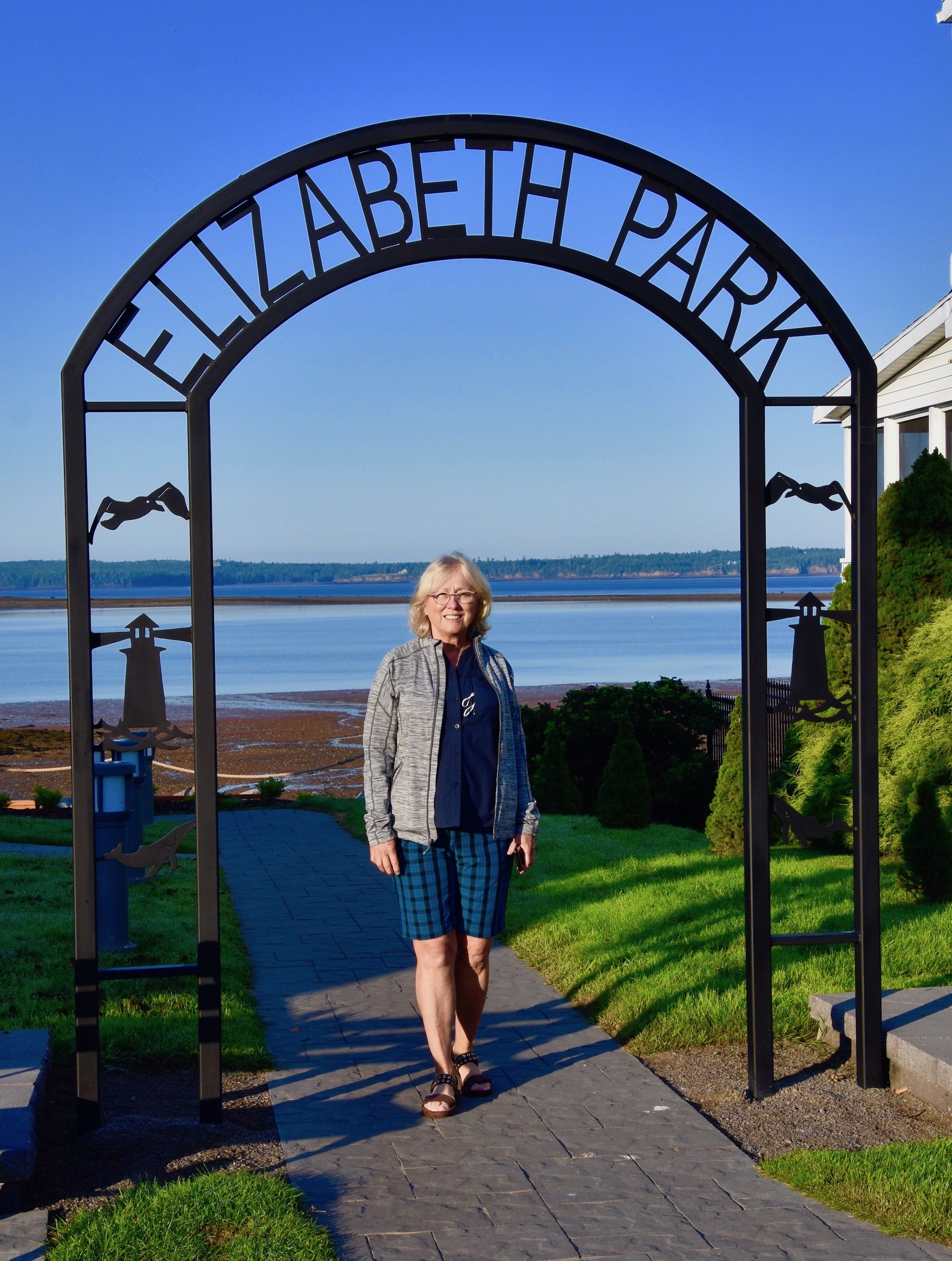
However, it does provide for a nice view of St Andrews harbour which is currently at low tide. This is the view looking south.

And this is looking north.
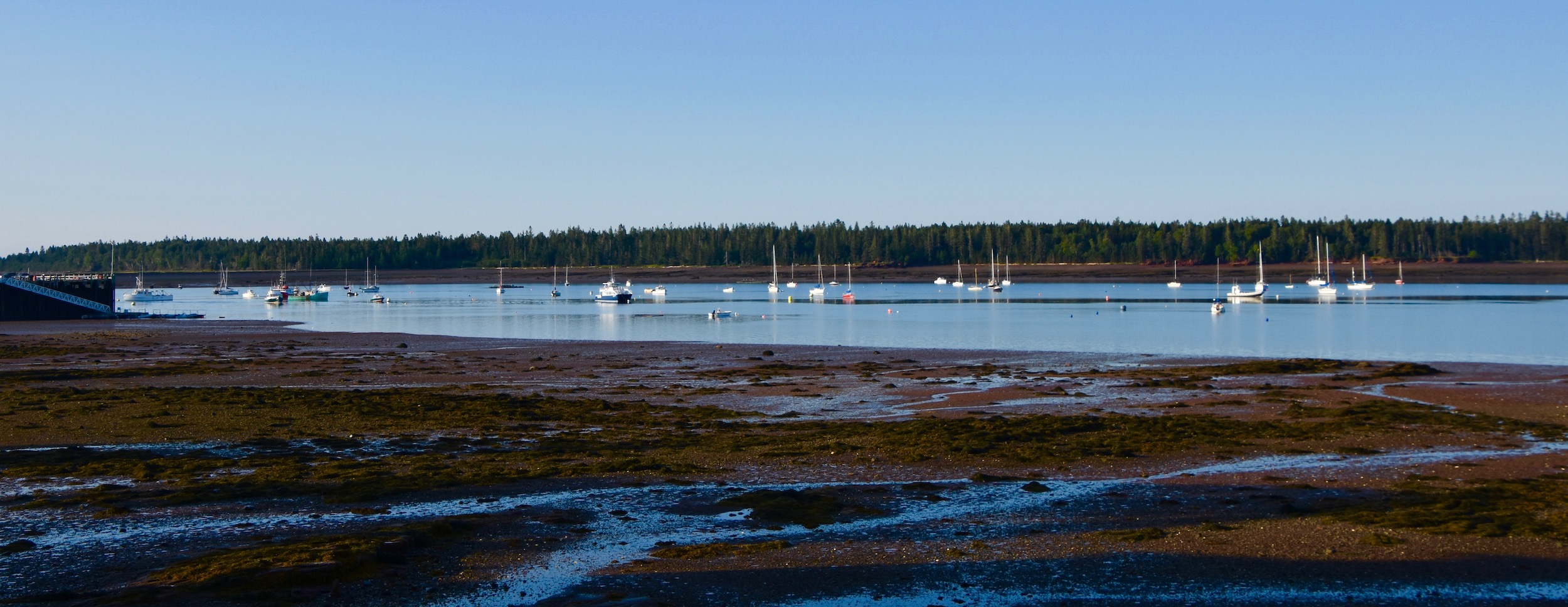
We turn left and head toward the lighthouse at the far end of Water Street. This will take you through the prime tourist district of St. Andrews.
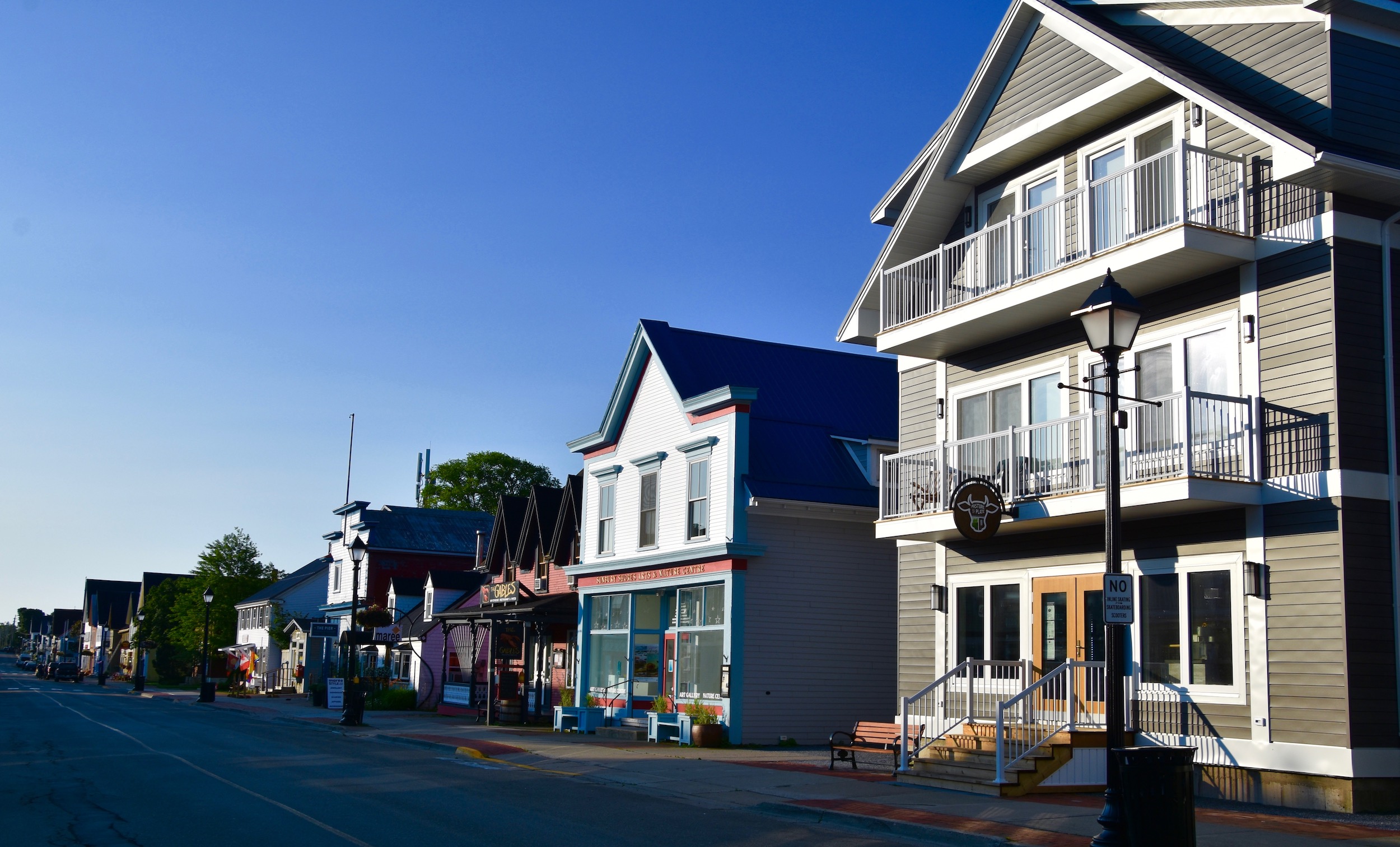
For the most part Water Street has avoided the kitschyness that desecrates so many otherwise very nice tourist towns. Most of the items for sale in the many galleries and gift shops are of high quality and you won’t have any problem finding genuine Maritime crafts to take home not just as a souvenir, but to admire as a piece of art.
This is the folk art whale that adorns the side of The Whale Store.
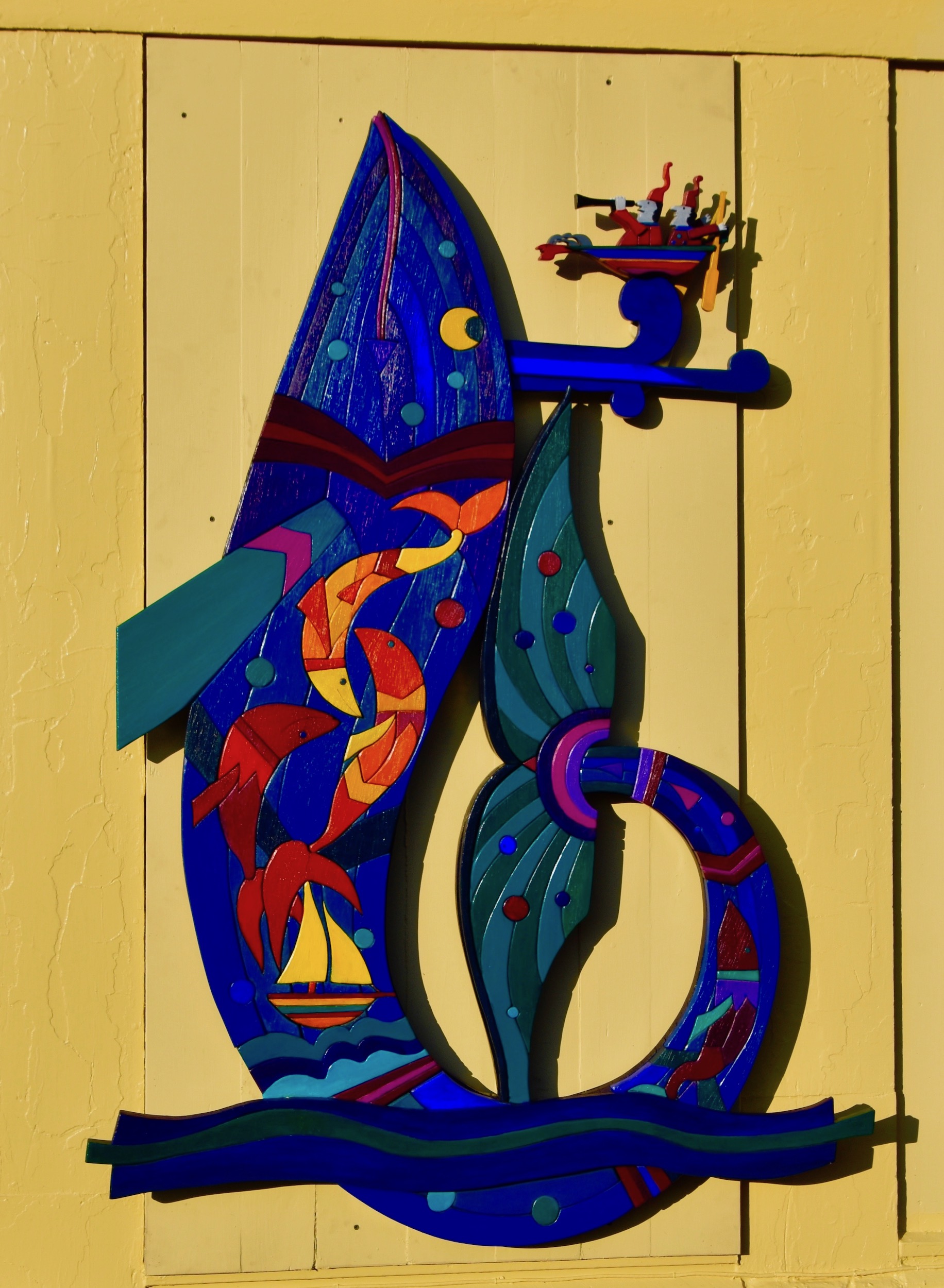
Whales are a big deal in St Andrews as you will find out when you arrive at the foot of the Market Wharf where a large number of establishments are offering whale watching tours. The Bay of Fundy is one of the best and most reliable places to see whales anywhere on the east coast of North America. This sculpture in front of one these establishments is of a humpback whale getting ready to breach. It is one of the great sights in all of nature and frequently seen on these whale watching tours.
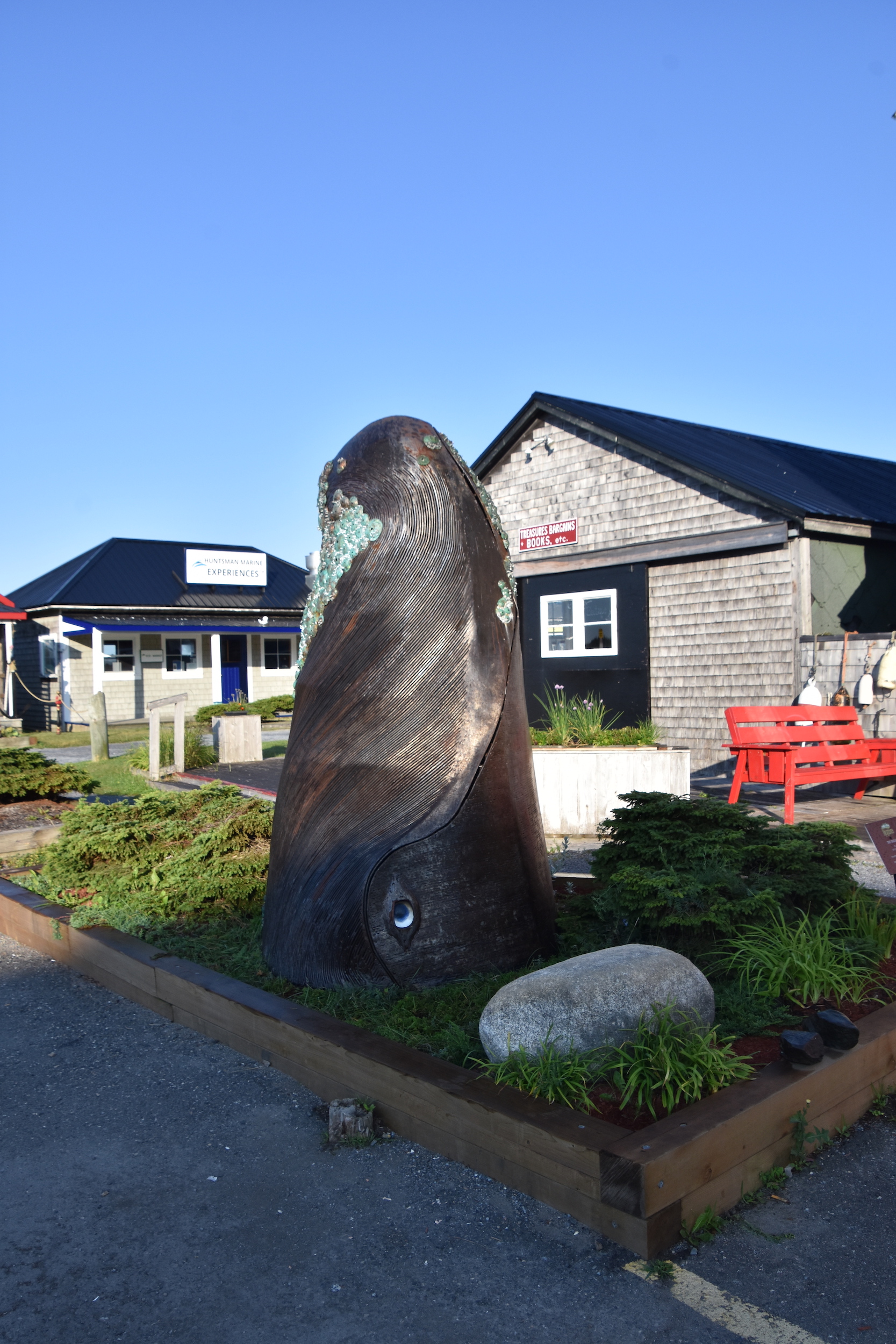
The Market Wharf is one of best places to stroll in all of St Andrews with great views both out to sea and of the waterfront.
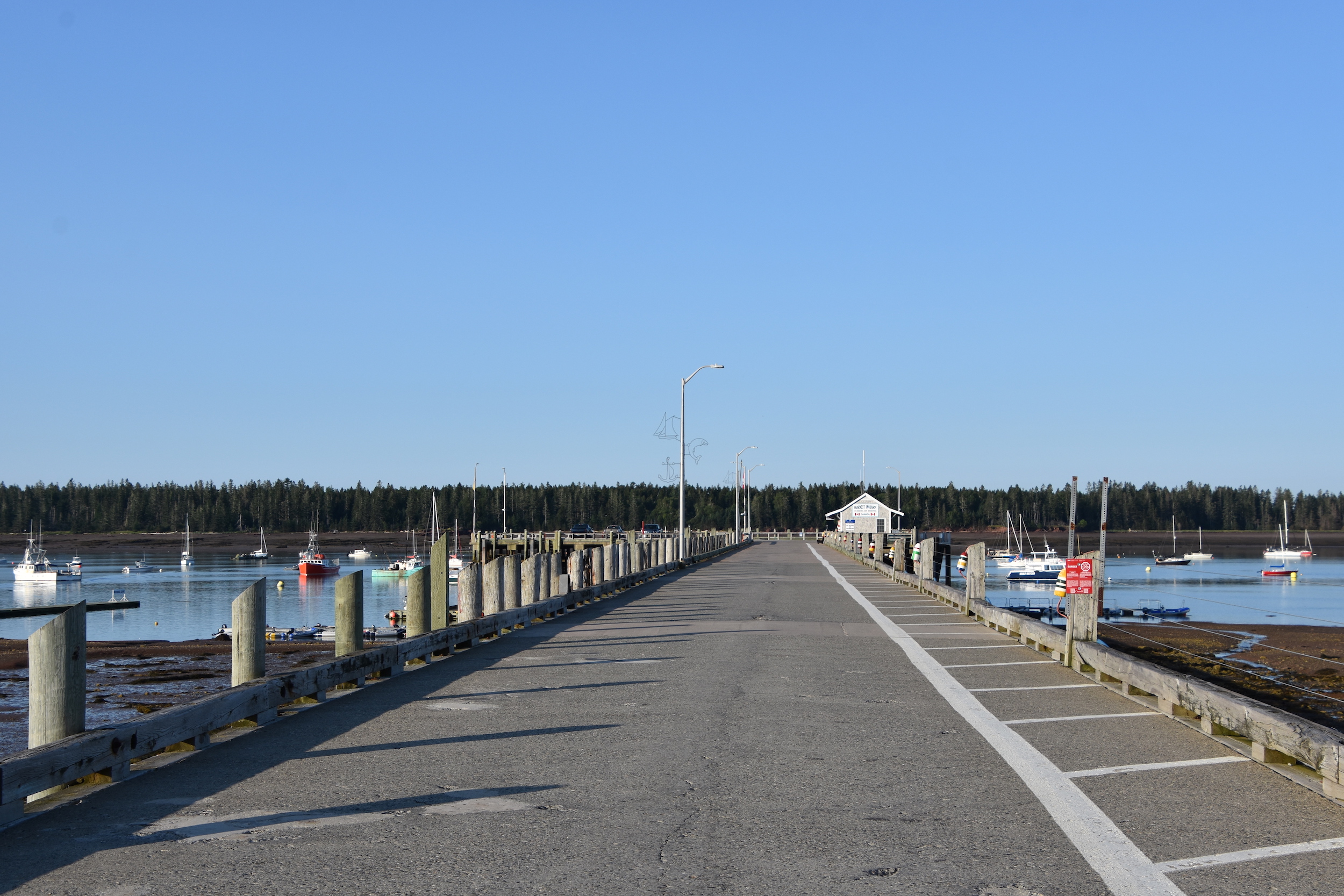
This was the view from the end of the wharf during our morning walk. The two large boats at the forefront are whale watching vessels.
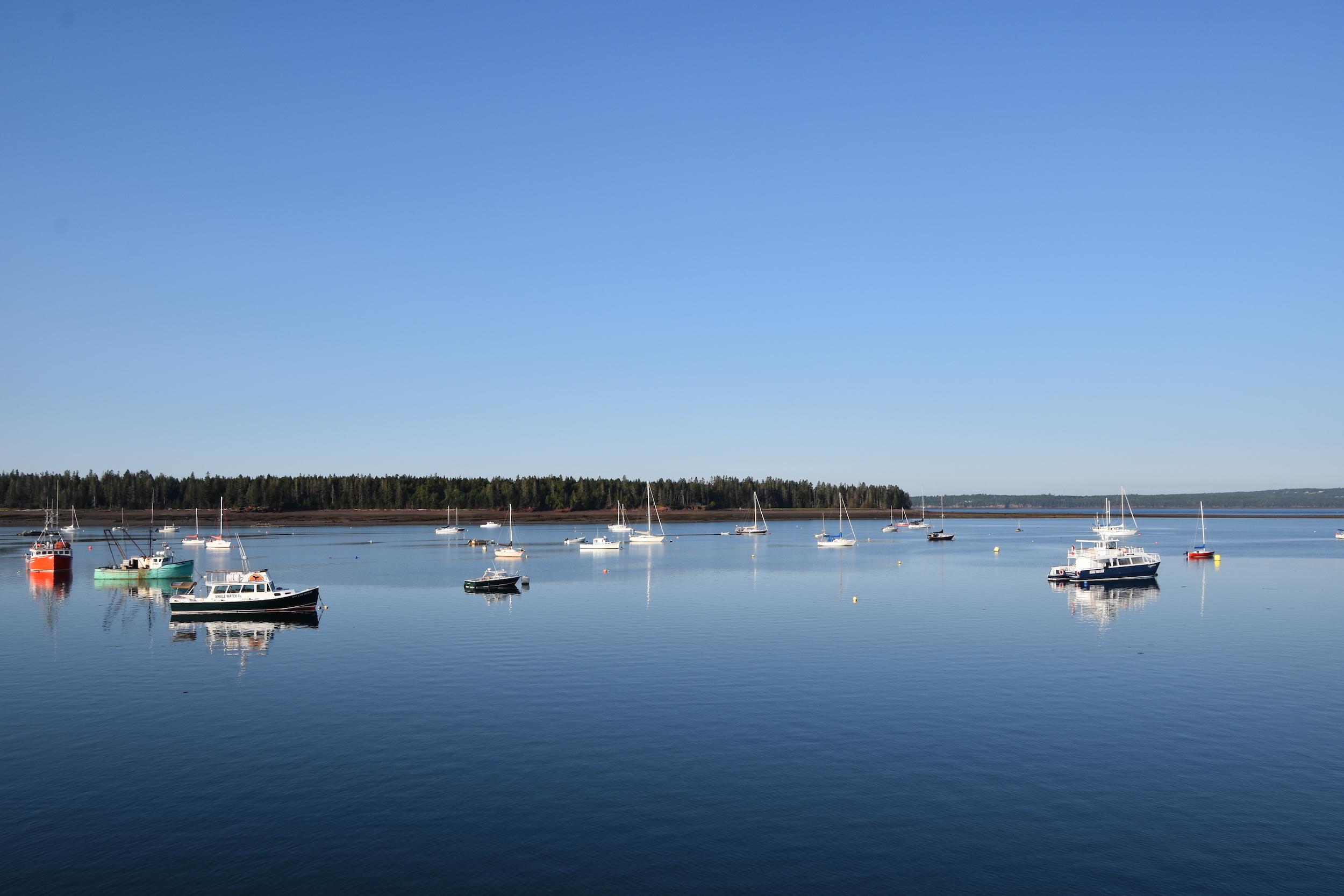
Not far past the Market Wharf, Water Street becomes much more residential with many of the oldest buildings in St Andrews, each identified by its heritage plaque. We turn right on Patrick Street (surprisingly, not one of George III’s children) and pass a cottage decorated with birds of all types including these three owls.
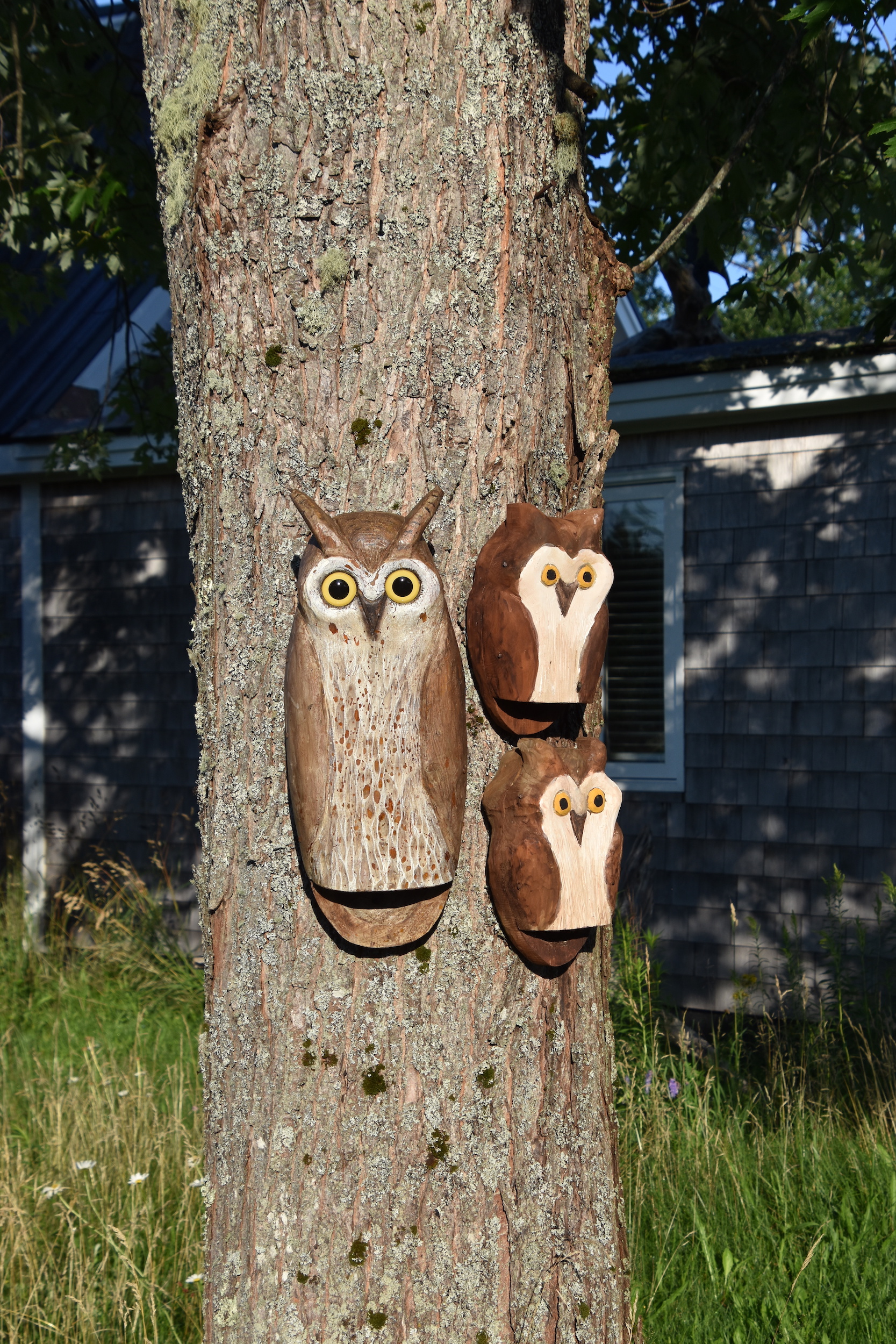
At the end of Patrick Street is the Pendlebury Lighthouse guarding the entrance to the harbour.
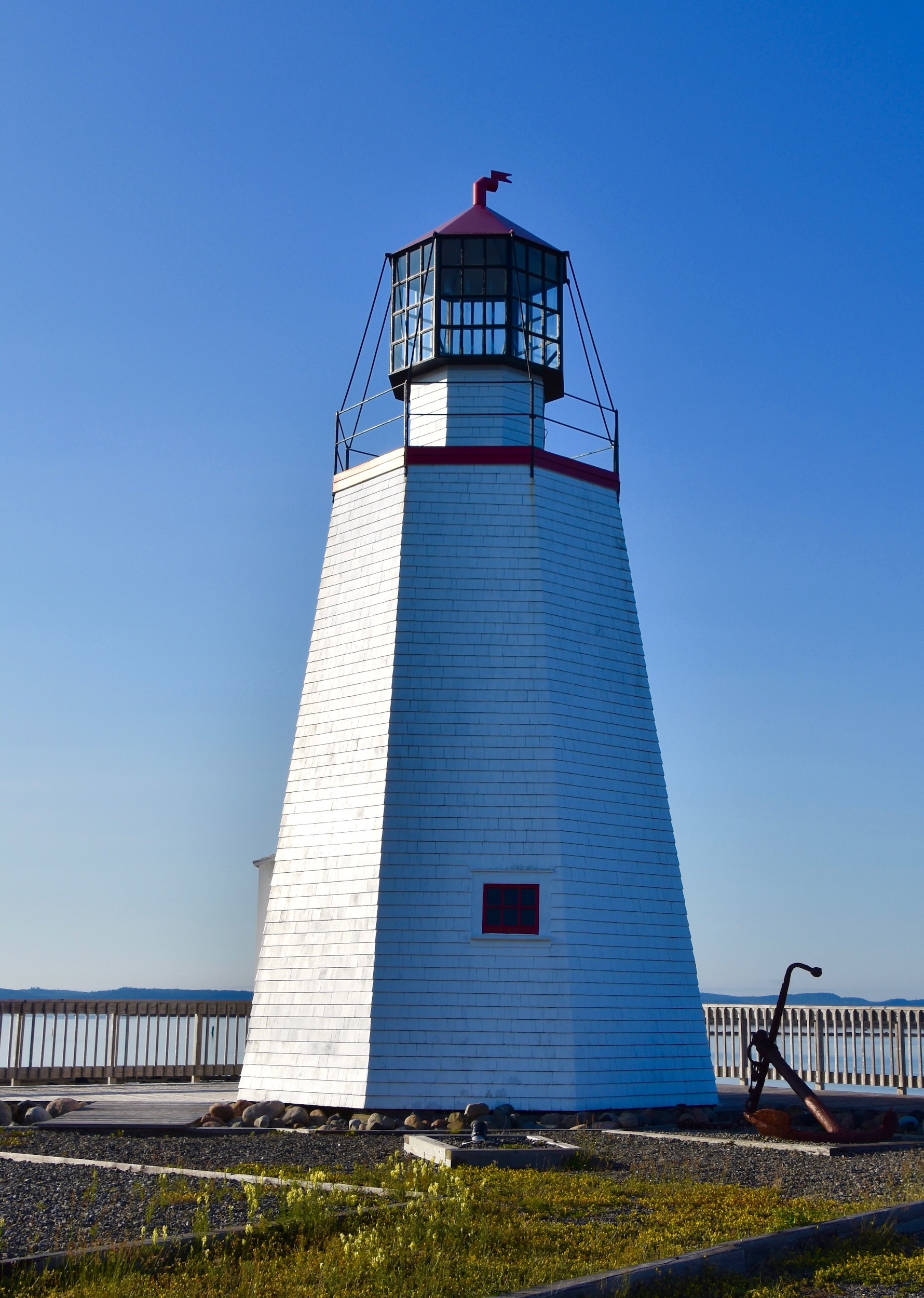
This marks the far end of Water Street and for a short distance we retrace our steps on the opposite side. The light is still good as it strikes the front of these two houses.
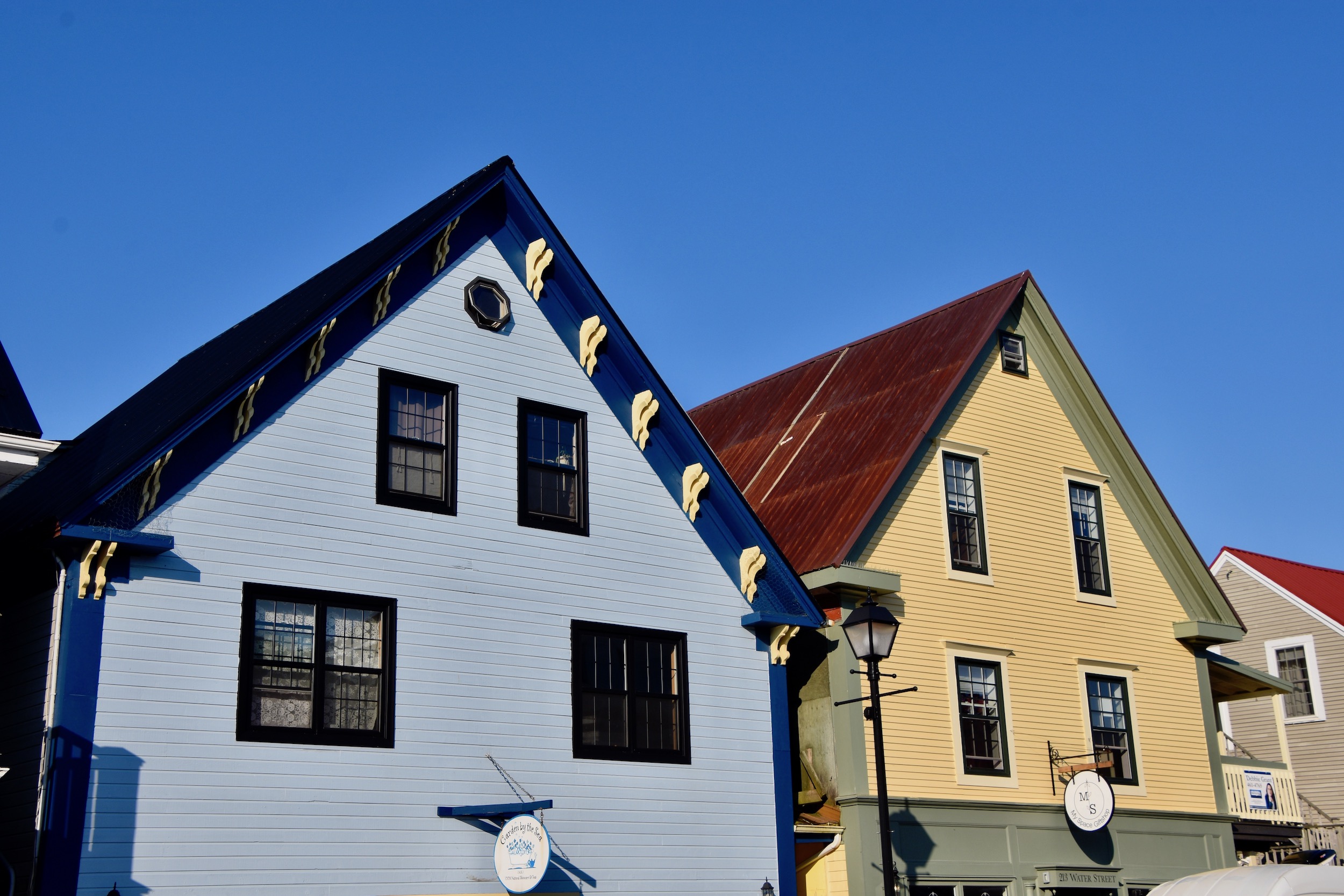
Time now to turn away from the waterfront and seek out a couple of St Andrews’ better known churches. This is All Saints Anglican Church which dates from 1867.
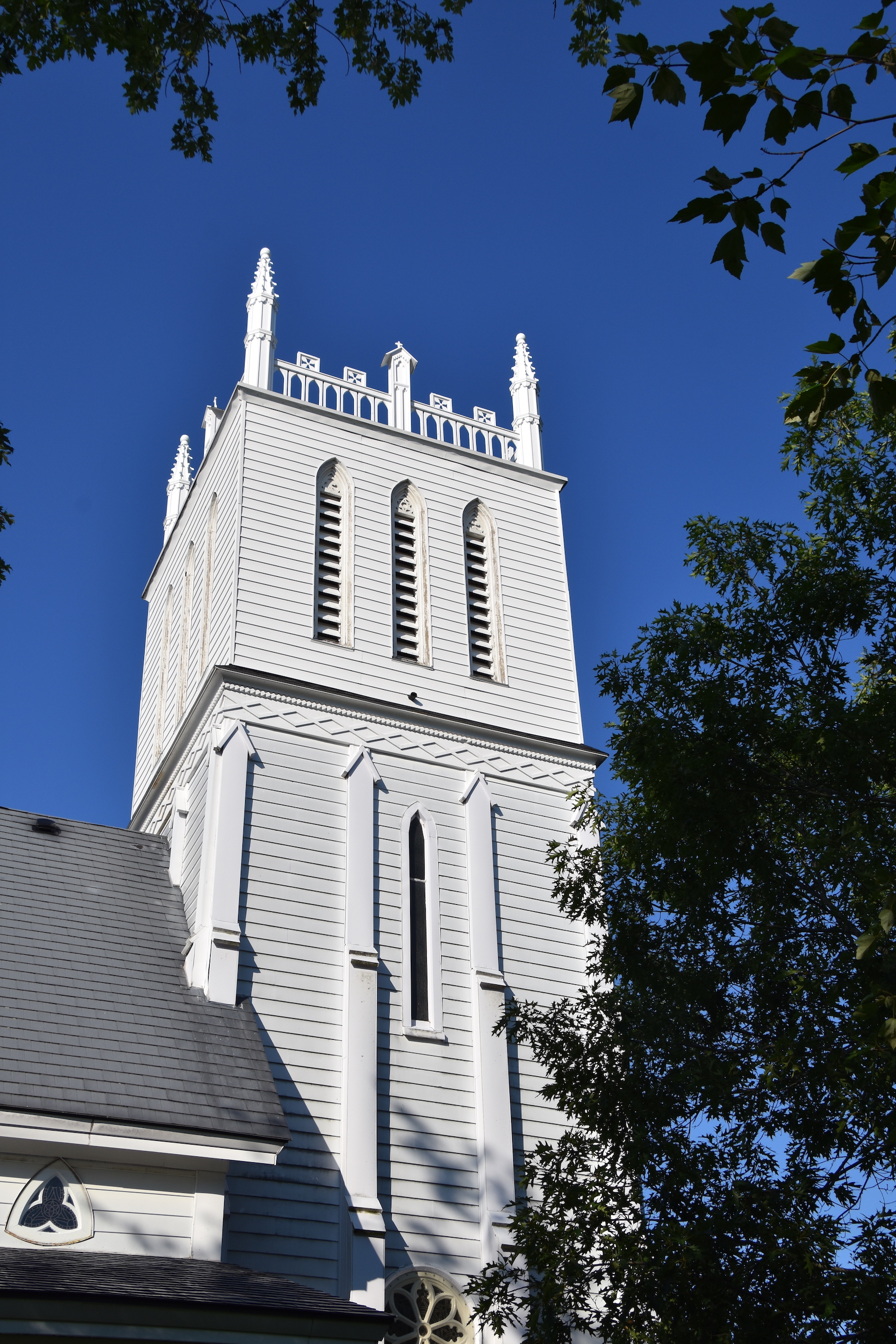
One block over is this imposing edifice, Greenock Presbyterian Church which was the gift of Capt. Christopher Scott who was a native of Greenock, Scotland and asked only that they include this town in its name. It is considered to be one of the finest examples of church architecture in Canada and is a designated National Historic Site.
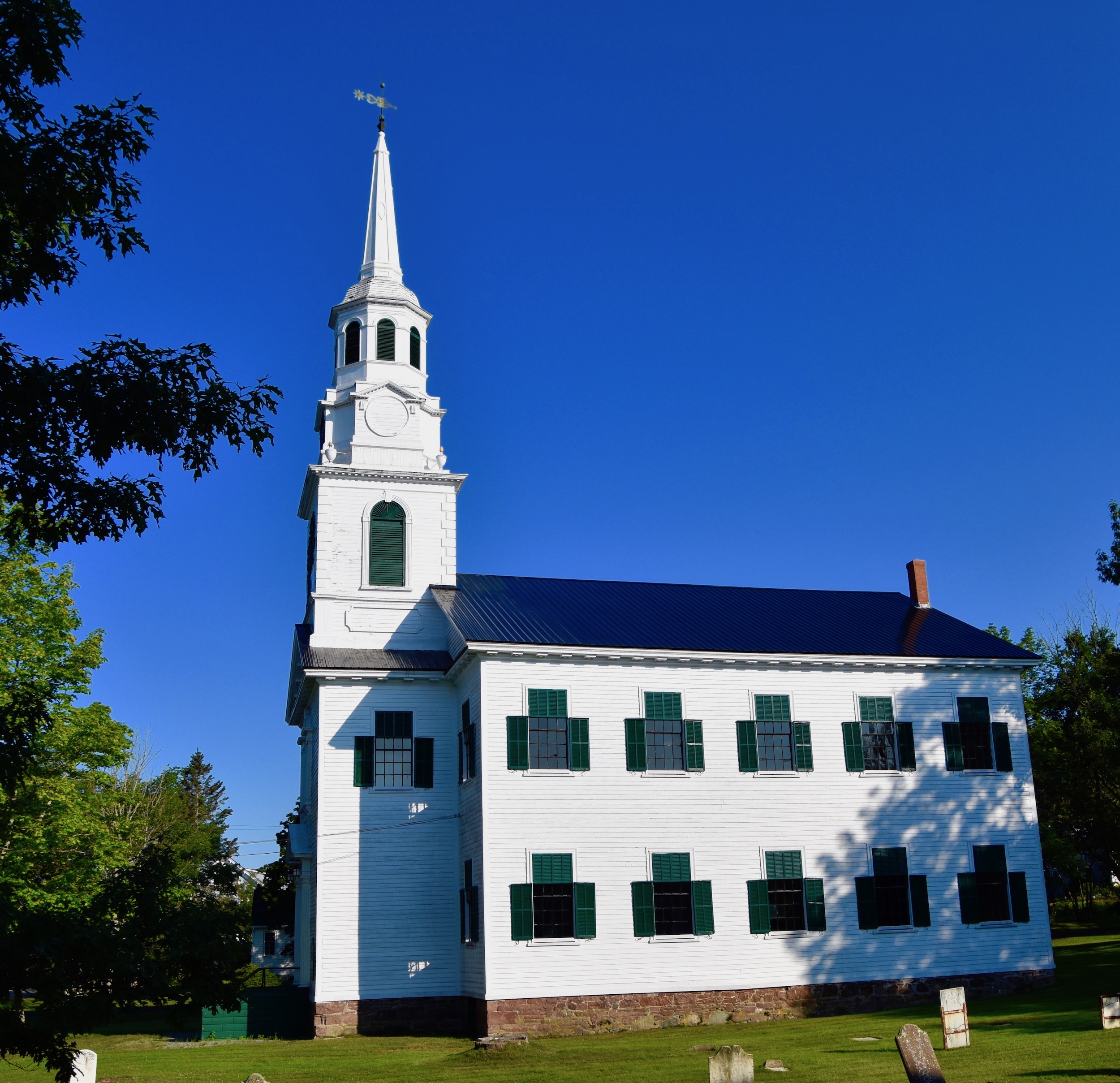
This is view looking up at the steeple.
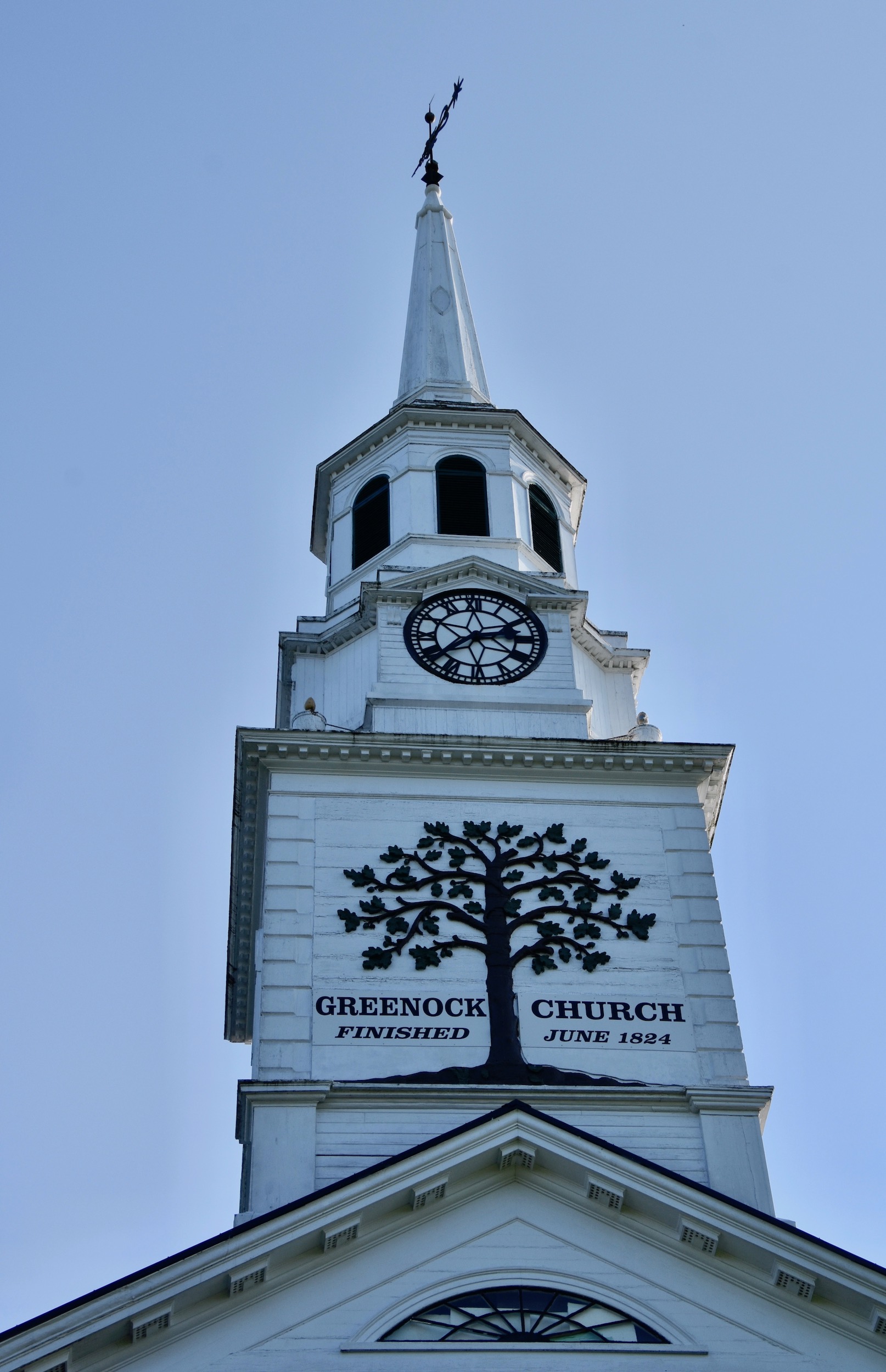
St. Andrews Blockhouse
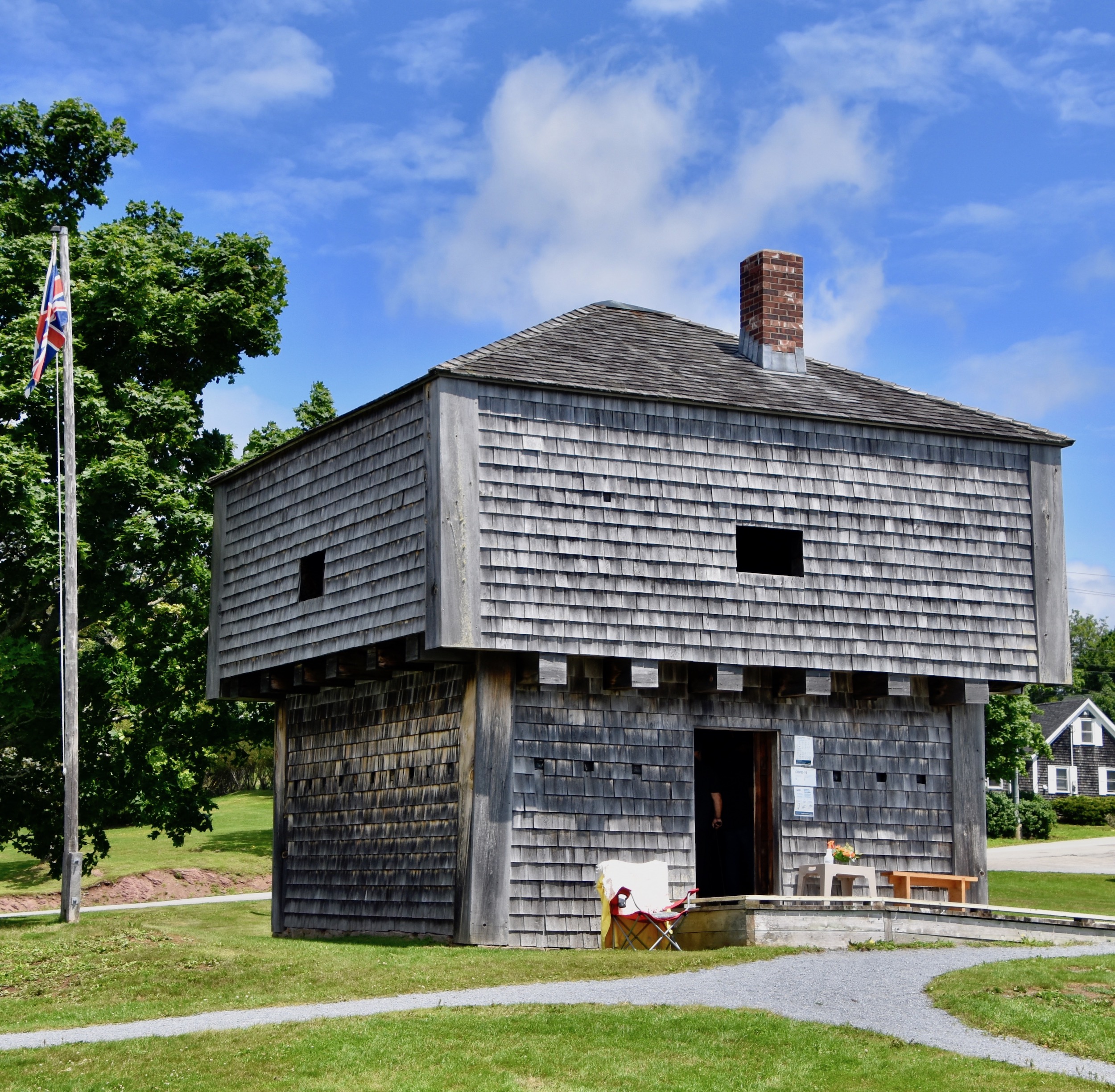
The last stop on the St Andrews walking tour is at the other end of Water Street. St. Andrews Blockhouse National Historic Site is the only remaining blockhouse built specifically for the War of 1812. Just across Passamaquoddy Bay lies the state of Maine so when war was declared in 1812 St Andrews residents were justly worried. It was not their American neighbours they were worried about, relations with them remained largely unchanged, but rather American privateers who would view the wealthy town as a valuable prize. To defend against them they would needed mounted cannons. It was the residents of St. Andrews who paid for the construction of the blockhouse by the militia. The British kicked in three mounted 18 pound cannons and a four pounder for the blockhouse.
They are all still there.
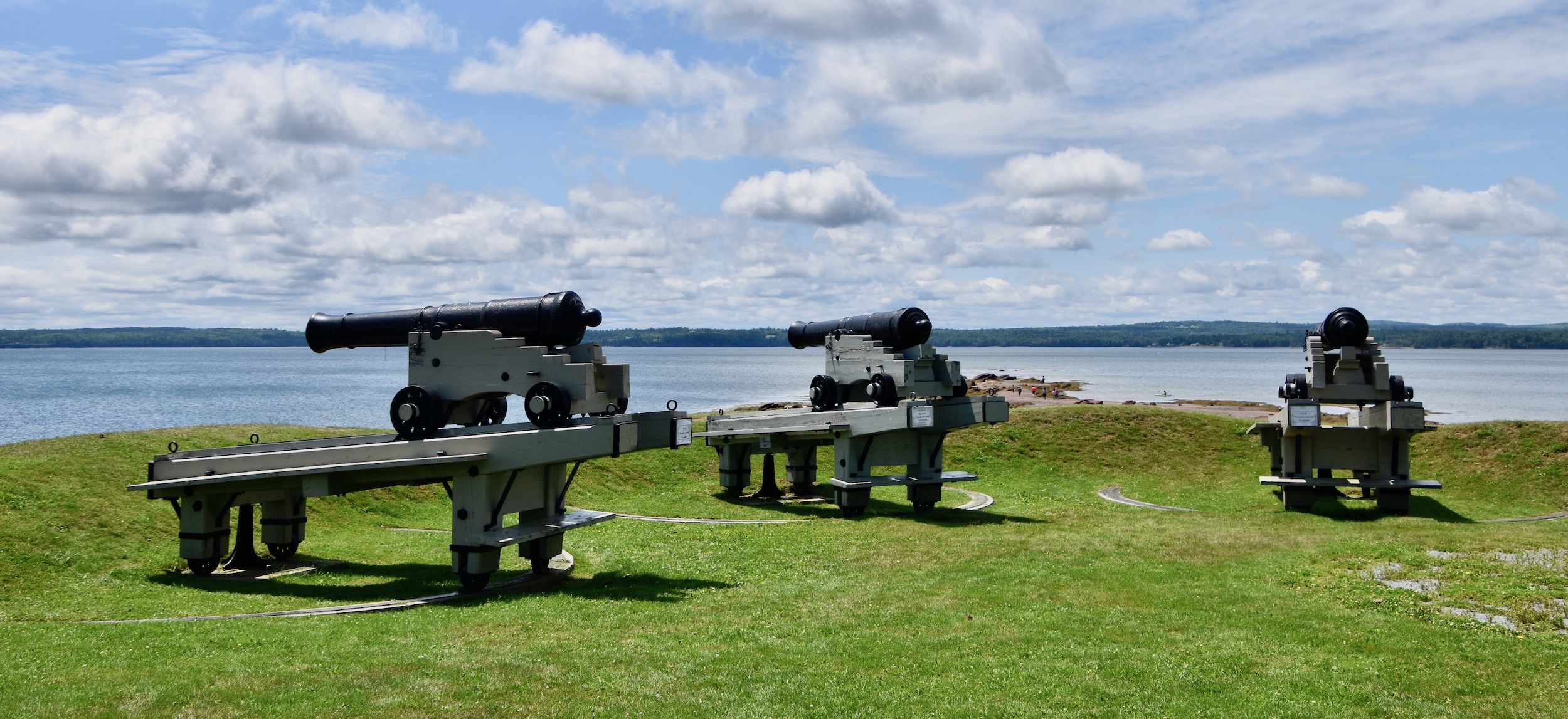
The blockhouse has a lovely location with this view at low tide.
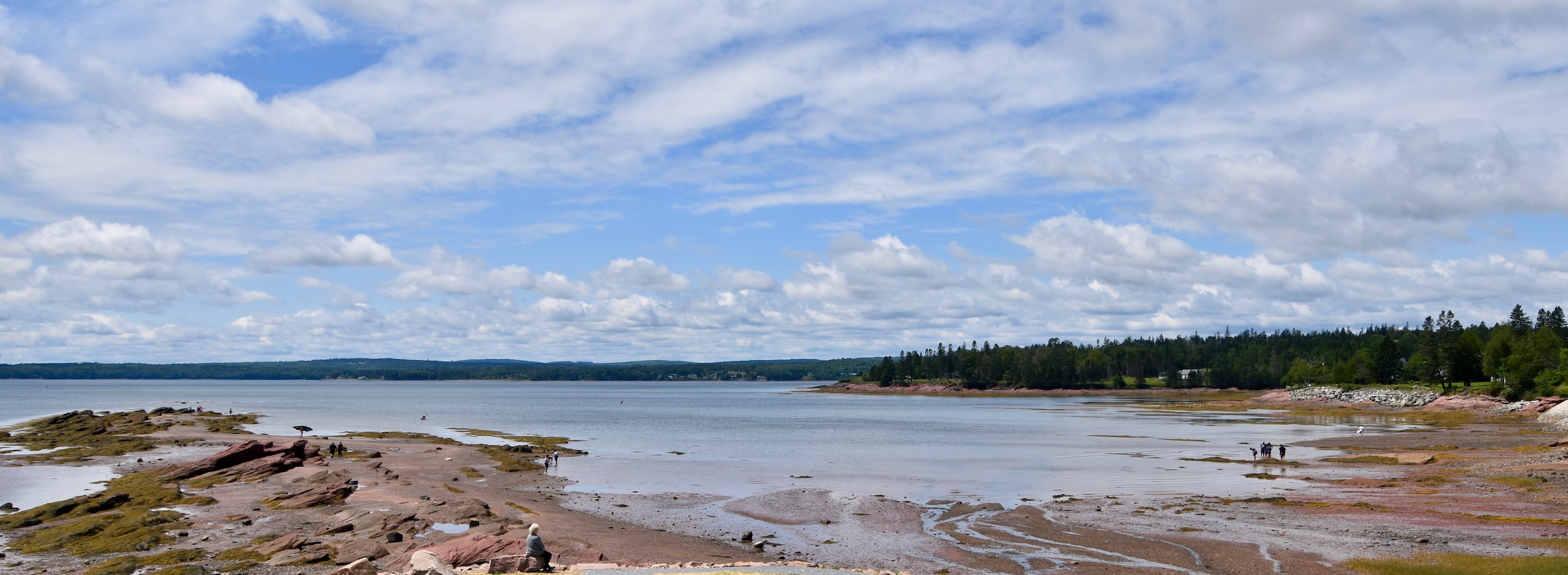
At this time an offshore reef is exposed that you can walk out on for great views looking back at the blockhouse.
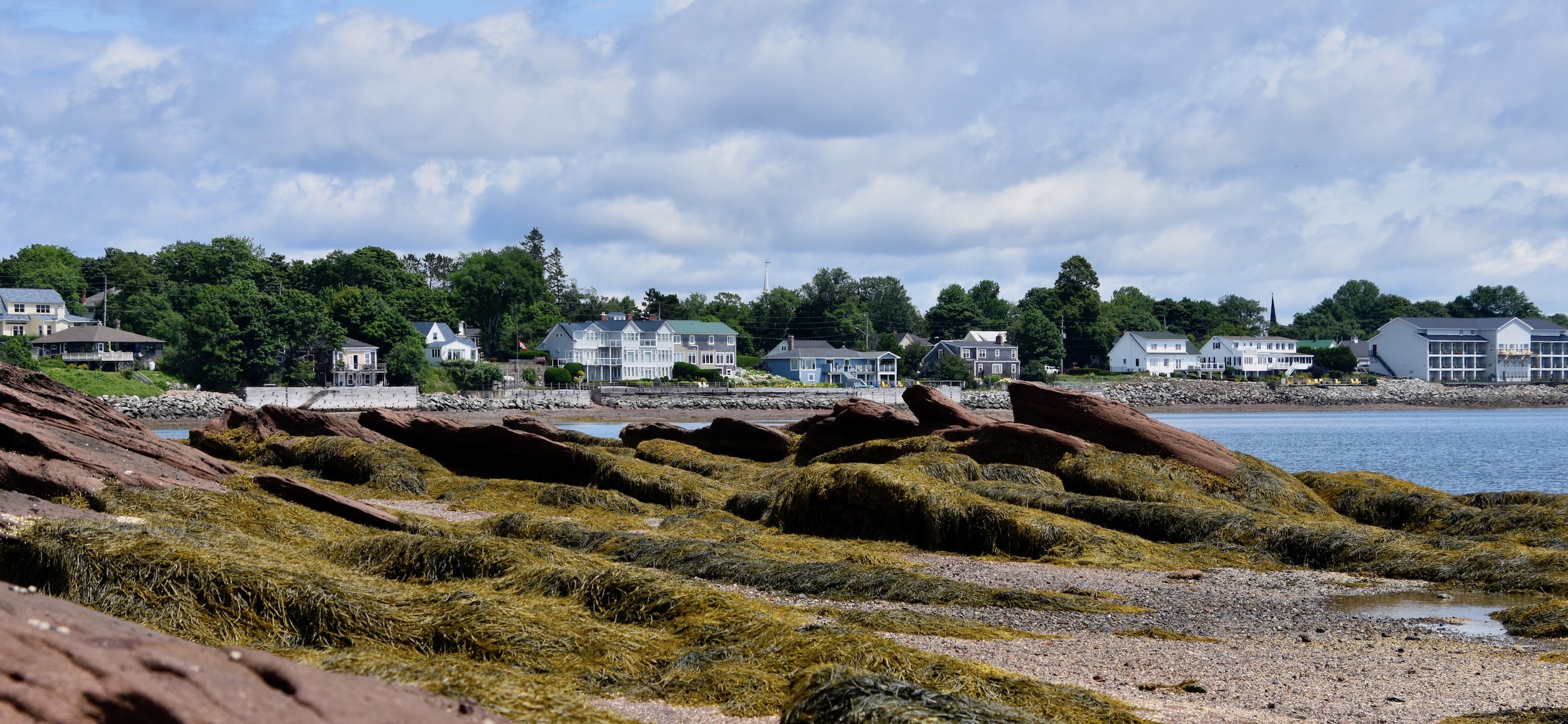
The reef itself is pretty neat to photograph.
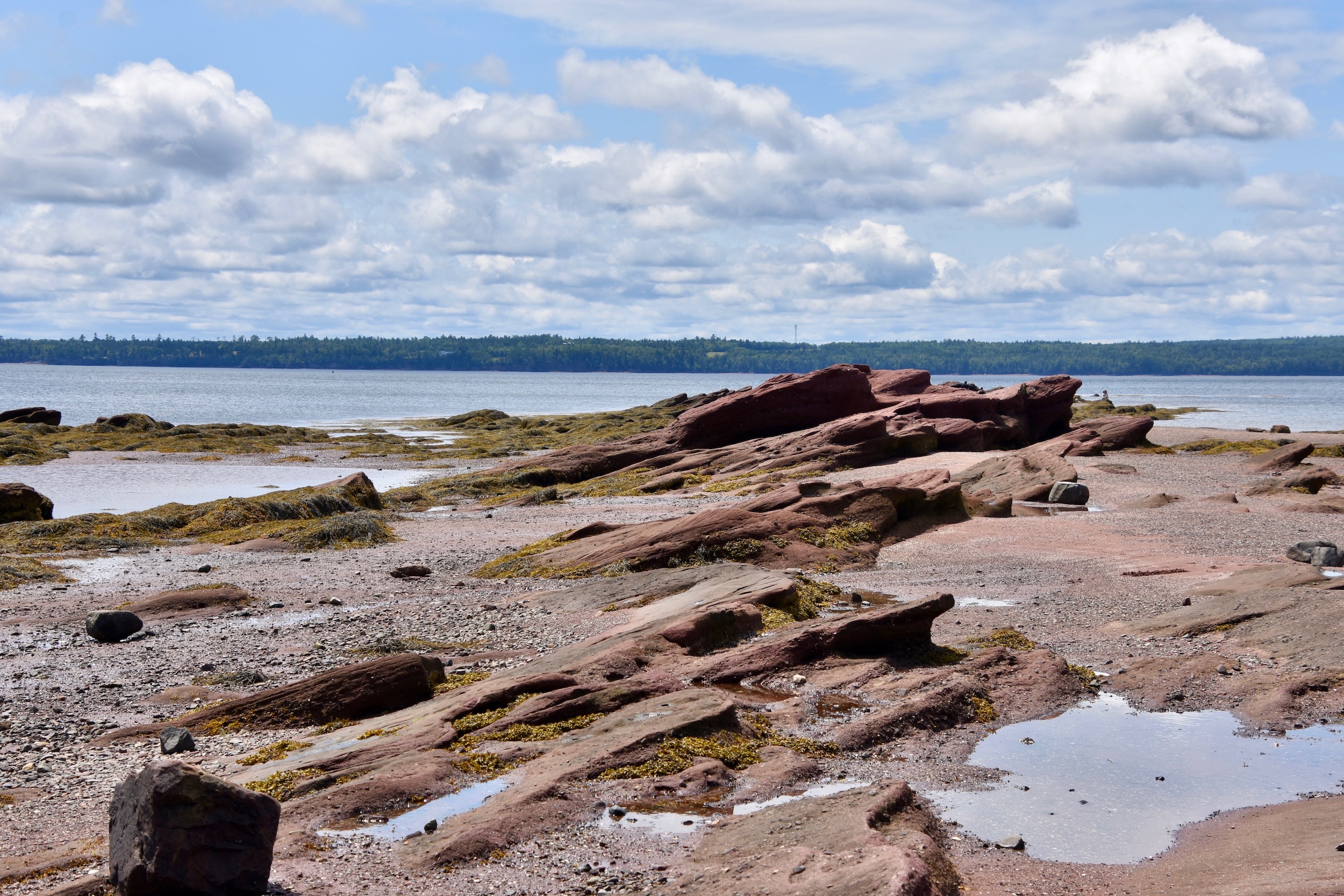
Well we’ve been out for a good couple of hours and it’s time to head to one of the Water Street restaurants for breakfast. We hope you will enjoy strolling the streets of St Andrews By-the-Sea as much as we did.
This my final post on the 2021 New Brunswick tour. Alison and I have enjoyed it immensely, visiting Grand Manan island where we kayaked, whale watched, hiked and ate great seafood, Campobello island where we toured Franklin Delano Roosevelt’s summer home and played golf at Herring Cove and finally St. Andrews where we golfed at Algonquin, visited Kingsbrae Gardens and enjoyed the walk I described today. New Brunswick has so much to offer that there is a reason we both look forward to visiting The Picture Province at least once every year. And so should you.

